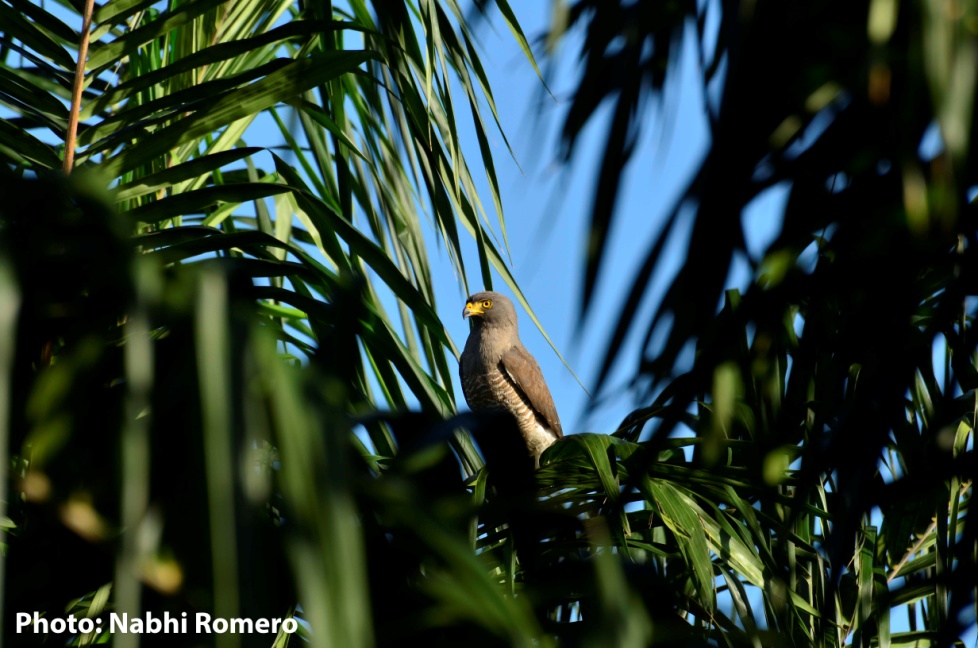Mardi 2 mai 2017 à 11h en salle Jean-Paul Taris, Lina Lopez Ricaurte et Matteo Darienzo présenteront deux séminaires en anglais intitulés « Impacts of oil palm expansion on avian biodiversity in a Neotropical natural savanna » et « Modeling the spread of Avian Influenza Virus in aquatic reservoir with epidemiological and hydrodynamic approaches: A case study in Rhone delta« ; l’accès est libre et sans inscription.
Impacts of oil palm expansion on avian biodiversity in a Neotropical natural savanna par Lina Lopez Ricaurte
 The ecological consequences of habitat conversion to oil palm plantations in tropical rain forest have been well documented. However there is limited knowledge of the biodiversity impact of oil palm conversion in other vulnerable ecosystems such as natural savannas. Partly due to forest-oriented conservation policies and perceived low biodiversity impacts, tropical natural savannas in South America have been identified as fertile grounds for future oil palm expansion. Tropical savannas typically comprise mosaics of native grass-dominated habitat with forest and wetland patches. In this study, we quantified the impacts of converting tropical natural savannas to oil palm for bird communities in the Colombian Llanos.
The ecological consequences of habitat conversion to oil palm plantations in tropical rain forest have been well documented. However there is limited knowledge of the biodiversity impact of oil palm conversion in other vulnerable ecosystems such as natural savannas. Partly due to forest-oriented conservation policies and perceived low biodiversity impacts, tropical natural savannas in South America have been identified as fertile grounds for future oil palm expansion. Tropical savannas typically comprise mosaics of native grass-dominated habitat with forest and wetland patches. In this study, we quantified the impacts of converting tropical natural savannas to oil palm for bird communities in the Colombian Llanos.
We explored oil palm plantation management features that affect bird conservation and identified species life history traits associated with higher sensitivity to oil palm conversion. Bird species richness and abundance were significantly reduced in oil palm relative to adjacent natural savannas, with marked concomitant shifts in community composition. Among life history traits, aquatic and grassland specialists, granivores and migratory species all showed significantly lower abundance in oil palm habitat relative to savanna. We found two species of conservation concern in natural savanna habitat that were absent from adjacent oil palm plantations: Polystictus pectoralis and Mitu tomentosum. Bird species richness and abundance in oil palm increased significantly with proximity to forest patches, suggesting that forest retention within and around plantations may bolster biodiversity within plantations, but would be unlikely to benefit savanna specialists.
Our work underlines the biodiversity importance of natural savannas in the Colombian Llanos, particularly for waterbird communities, warranting protection against conversion into oil palm or other crops. Thus, it is urgent to strengthen and to develop savanna-oriented conservation policies such as the creation of protected areas, and to limit oil palm expansion to already degraded lands, including improved grassland areas currently used for cattle grazing.
Modeling the spread of Avian Influenza Virus in aquatic reservoir with epidemiological and hydrodynamic approaches: A case study in Rhone delta par Matteo Darienzo
 Avian Influenza Viruses (AIV) are emerging pathogens that can infect wildlife, domestic animals and humans. Wild aquatic birds, especially Anatidae (ducks, geese and swans) and Laridae (gulls and terns), are the natural main hosts of AIV.
Avian Influenza Viruses (AIV) are emerging pathogens that can infect wildlife, domestic animals and humans. Wild aquatic birds, especially Anatidae (ducks, geese and swans) and Laridae (gulls and terns), are the natural main hosts of AIV.
AIV present two transmission modes: a fecal/oral direct transmission on the ground and a long viral persistence in the environment. Previous studies in laboratory and in the field showed that low salinity, low temperature and neutral pH favor AIV persistence in water.
The aim of this study is to open new opportunities for pathogen surveillance thanks to the identification of pathogen “hotspots” considering both hydrodynamic and epidemiological modeling, focusing on the Camargue Vaccarès hydrosystem. The hydrodynamic functioning of this network has been modeled by using Telemac-2d and it is combined with a SIR epidemiological model. Three compartments are considered within a population: susceptible S, infected I and recovered/removed R individuals. The Vaccarès hydrologic system has been subdivided into twenty-eight interconnected polygons; for each of these areas a different SIR model is analyzed and the available data on seasonal Mallard abundance for each polygon are considered. For instance, only one subtype of AIV is considered and injected in the domain.
Further research must be done to improve the efficiency of the model, like considering a multi-agent SIR model, or with a better estimation of AIV behavior in water.
Suivez l’actualité de la Tour du Valat et de l’Association des Amis de la Tour du Valat sur Facebook et Twitter :
Page Facebook de la Tour du Valat
Twitter Tour du Valat
Page Facebook de l’Association des Amis de la Tour du Valat